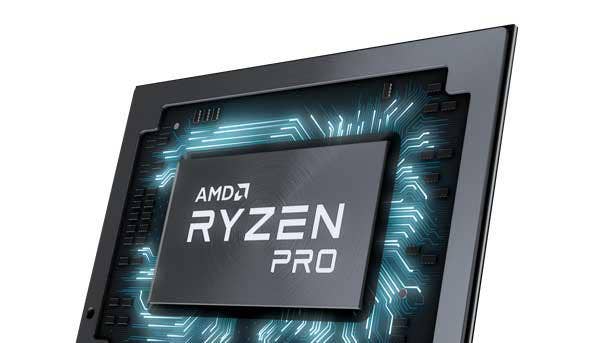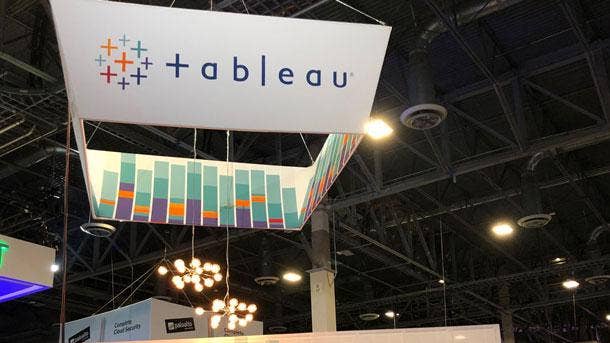The 10 Top News Stories Of 2019
Increased regulatory scrutiny of the major Internet companies, the rise of Everything-as-a-Service, the heated competition between Intel and a resurgent AMD, and a controversial Pentagon cloud IT contract made for an interesting 2019.

2019: MSPs At Risk, Everything-As-A-Service, Channel Consolidation And Blockbuster Acquisitions
See the latest entry: The 10 Biggest News Stories of 2022
With the booming economy, 2019 was a good year for the IT industry and the channel.
And yet the year certainly had its share of turbulence and controversies. A massive cloud computing contract from the Pentagon was in the headlines at the start of the year – and only became more controversial as the year wore on. Industry giants like Amazon and Google came under increased scrutiny from law makers and regulators for their business practices. And a percolating battle between industry chip giants Intel and AMD came to a full boil.
Add in major industry shifts like the move to Everything-as-a-Service, channel consolidation and IT industry acquisitions with price tags in the billions: It all made for an interesting 2019.
Here's our lineup for the 10 top news stories of 2019. Take a look and see if you agree with our choices.

10. Microsoft Rescinds Decision To End Internal Use Rights
Just one week before its Inspire 2019 partner conference in July, Microsoft surprised its huge channel community when it disclosed that it would no longer offer free product licenses for internal business use by partners. The company cited the shift to cloud-based products as one reason for eliminating the internal use rights (IUR) program, although the high costs of delivering and supporting the software was also cited as a major factor in the decision.
The news created an uproar among channel partners, who said IUR provided valuable opportunities to gain hands-on experience with Microsoft software and deploying and testing applications in production environments. Some partners said they would abandon their Microsoft Action Pack subscriptions because of the elimination of the IUR and an online petition protesting the move quickly gained hundreds of partner signatures.
The blowback increased throughout the week – Microsoft Channel Chief Gavriella Schuster (pictured) acknowledged that the feedback on the IUR elimination had "not been good." Five days after the original announcement Microsoft reversed course and rescinded its decision on ending the longtime channel benefit.

9. Regulatory Scrutiny Of Internet Giants On The Rise
In July Facebook agreed to pay a $5 billion penalty to settle Federal Trade Commission allegations that the social media giant mishandled user privacy practices and lost control over huge amounts of user data.
The record fine paid by Facebook is the most visible example of a growing wave of scrutiny and anticipated investigations of tech giants Facebook, Google, Amazon and Apple in such areas as data privacy and antitrust actions.
In July the U.S. Justice Department said it is scrutinizing "leading online platforms" to determine whether they are abusing their dominant positions in the market – potentially taking aim at the four big companies. Earlier reports have said the Justice Department is specifically looking at Apple and Google while the Federal Trade Commission is undertaking investigations of Facebook and Amazon. And just this month a Bloomberg report said the FTC had expanded its antitrust probe of Amazon’s retail business to include Amazon Web Services, the company’s cloud business unit.
And it’s not just regulatory agencies that are taking aim at the IT giants. In September all 50 state attorneys general announced a joint investigation into Google’s potentially anti-competitive and “monopolistic” online search and advertising practices. That same month the House Subcommittee on Antitrust, Commercial and Administrative Law began surveying Amazon, Apple, Facebook and Google customers to determine whether the giant companies were engaging in anti-competitive business practices.
All this comes on top of ongoing antitrust actions brought by the European Commission, the governing body of the European Union. In March the EC hit Google with a $1.69 billion fine for allegedly stifling competition in online advertising. And the EC just opened an investigation of Amazon for possible anti-competitive behavior relating to alleged use of data from independent retailers that use the Amazon marketplace.

8. Service Outages Hit Salesforce, Microsoft Cloud, Slack
Cloud computing and the Internet have become integral to how people work. So much so that service interruptions with cloud services are no longer just disruptive, they can bring business to a complete halt.
And there have been multiple such incidents in 2019. Salesforce grappled with the worst service disruption in its history for several days in late May, leaving sales agents and marketers around the world unable to access customer information. Cloudflare, which provides content delivery network services for millions of websites, experienced a massive outage June 24 that brought much of the Internet to its knees.
Several core Microsoft cloud services, including compute, storage, application development, Active Directory and SQL database services, were hit by a nearly three-hour DNS outage May 2 that also impacted the vendor's Microsoft 365 and Dynamics 365 cloud applications. Microsoft 365 customers were inconvenienced again in November when a botched network update disrupted access for several hours to such popular applications as Outlook, Teams and Skype for Business.
Google Cloud services, including G Suite and YouTube, failed for about four hours June 2 when cascading errors created a network congestion problem.
And on June 28 Slack, the widely popular collaboration platform used by millions of office and remote workers, suffered disruptions across its services, forcing workers to find alternative ways to communicate and, in some cases, actually talk to each other.
As the cloud matures, service disruptions are becoming less frequent and getting shorter in duration. But businesses, organizations and workers have become so reliant on cloud services that any disruption today makes headlines.

7. HP Inc.’s Turbulent Year
HP Inc., the former PC and printer business of the Hewlett-Packard Co. that split into two companies in 2015, was in the headlines a great deal in 2019, primarily for undertaking a major restructuring effort, changes in its top management and – at year’s end – an unwelcome acquisition offer from printer competitor Xerox.
On Aug. 22 HP announced that Dion Weisler (pictured), the company’s CEO since the spinoff from Hewlett-Packard, was stepping down due to a family health matter. He was replaced by Enrique Lores, the head of HP’s printing business. A week later the company unveiled plans for a new organizational structure, launching a new commercial organization (effective Nov. 1) and appointing HP veteran Christoph Schell as the company’s first chief commercial officer.
On Oct. 3 HP announced a massive restructuring plan that included reducing its employee headcount by up to 16 percent by the end of fiscal 2022. That was followed by a plan to shake up its print business model, reducing the subsidies it traditionally offered on printers with the expectation they would reap the benefits through high-margin printer supplies – that shift due to a downturn in the company’s printer supplies business.
But the real drama began in early November when reports began circulating that Xerox, fresh off the sale of its stake in Fuji Xerox for $2.3 billion, had made an unsolicited bid to acquire HP. On Nov. 6 and 7 the two companies acknowledged the Xerox offer, which Xerox called a move in an industry “long overdue for consolidation.” It also became public that activist investor Carl Icahn, who owns a significant stake in Xerox, had also acquired a stake in HP and was pushing for a merger.
HP rejected the Xerox offer, saying it significantly undervalued the company. HP partners, meanwhile, also expressed opposition to the acquisition idea, noting Xerox’s inexperience in the PC market and differences in the two vendors’ channel strategies.
Since then the dispute has become testier (a letter from the HP board in late November said Xerox’s leadership had used “aggressive words and actions” in its takeover bid). Xerox gave HP a Nov. 25 deadline to agree to mutual due diligence to support a deal or face a tender offer from Xerox directly to HP shareholders. That deadline came and went and on Nov. 26 Xerox CEO John Visentin said his company would take the $33 billion buyout offer directly to HP shareholders. In early December Xerox launched a 33-page presentation titled “HP + Xerox: A Value-Creating Combination,” in an effort to woo HP shareholders.

6. Intel-AMD Battle Heats Up
On Nov. 25 AMD debuted its new mainstream processor, the 16-core Ryzen 9 3950X, and the first two third-generation Threadripper processors (with 16 and 24 cores) – and provided a glimpse of a 64-core Threadripper CPU under development for 2020. One week later AMD announced an ecosystem of manufacturers developing mini PCs powered by Ryzen Embedded processors – a move see as challenging Intel’s dominance in the mini PC space.
The moves were the latest shots in what proved to be an increasingly heated battle between Intel, the long-time market leader in the microprocessor market, and AMD, the rejuvenated chip manufacturer that has been pushing the envelope of microprocessor technology.
AMD's volley came as Intel was dealing with the fallout from an ongoing CPU shortage that plagued the company's OEM and channel partners throughout 2019. "We're letting our customers down, and they're expecting more from us," Intel CEO Bob Swan said in October during the company's third-quarter earnings call.
In July AMD launched its 7-nanometer Ryzen 3000 processors for the client computing market, posing a challenge to rival Intel. That prompted one solution provider to tell CRN: "It's no longer a forgone conclusion that people should buy Intel anymore." One month later the company unveiled the latest generation of its EPYC processors, new 7-nanometer products with 64 cores targeting the all-important server market, boasting that they provided higher performance and lower cost of ownership in the datacenter compared to Xeon chips from Intel.
In reporting the results of AMD’s third quarter, CEO Lisa Su said sales of EPYC server processors surged 50 percent after the launch of the new “Rome” chip, contributing to the company’s best quarter for revenue since 2005. The company has highlighted design wins such as Dell Technologies’ use of the second-generation EPYC Rome processor in its new PowerEdge servers.
Intel hasn’t been sitting still for all this. The same week AMD debuted its new EPYC chips Intel debuted a lineup of next-generation Xeon Scalable processors, code named Cooper Lake, with 56 cores for high-performance computing and artificial intelligence workloads.
In the face of the increased competition Intel has been highlighting its own customer and ecosystem wins and touting the advantages of the company's data-centric platform strategy with its expanding portfolio of CPUs, memory, accelerators and software. In a CRN interview in July Intel U.S. Channel Chief Jason Kimrey told CRN that channel partners should look beyond point technologies or speed benchmarks and bet on Intel's comprehensive platform story.
Intel has also taken a number of steps this year to stay cost-competitive, including slashing the price of i9 X-Series processors by up to 50 percent, extending price cuts of 40 to 50 percent for new Xeon W workstation CPUs, and cutting the price of GPU-less F-Series processors by up to 20 percent.Still, the competition goes on. On Oct. 1 AMD unveiled its new Ryzen Pro 3000 CPUs to take on Intel’s vPro processors in the commercial PC arena. And a week later it launched lower-power Ryzen 9 3900 chips for OEM and system builder partners.

5. Salesforce $15.7B Deal For Tableau Leads A Number Of Blockbuster Acquisitions
Cloud application behemoth Salesforce rocked the industry in June when it struck a deal to acquire Tableau Software for a whopping $15.7 billion. The companies said the combination of Salesforce's CRM applications and Tableau's business analytics and data visualization software would make Salesforce a digital transformation powerhouse. (The deal was completed Aug. 1.)
Major acquisitions frequently make headlines in the IT industry and 2019 has certainly had its share with the Salesforce-Tableau deal just one of a number of major acquisition deals announced or completed in 2019.
In July IBM wrapped up its $34 billion acquisition of open-source software developer Red Hat, a deal that was announced in October 2018, after clearing all necessary regulatory hurdles. Also in July, wireless carriers T-Mobile and Sprint won government approval for their long-gestating $26.5 billion merger. And in February AT&T won its long legal battle with the Justice Department over its 2018 purchase of Time Warner, making that $85.4 billion acquisition a done deal.
In early August semiconductor manufacturer Broadcom, which stunned everyone in 2018 with its $18.9 billion acquisition of software giant CA Technologies, struck again with a deal to buy Symantec's enterprise business for $10.7 billion, a move that broke up the world's largest pure-play cybersecurity vendor. (The acquisition was completed Nov. 4.)
Also in August virtualization giant VMware announced plans to buy developer software star Pivotal Software and endpoint security technology company Carbon Black in deals valued at $2.7 billion and $2.1 billion, respectively. (The Pivotal acquisition has had its share of controversy with Pivotal employees protesting potential layoffs once the acquisition is completed.)
Google has been in shopping mode this year to boost its Google Cloud business, striking deals to buy Looker Data Sciences for $2.6 billion and cloud file storage company Elastifile for an undisclosed sum. In May Hewlett Packard Enterprise agreed to acquire supercomputer maker Cray for $1.3 billion and in August bought the business assets of Hadoop platform developer MapR Technologies for an undisclosed price tag. Apple made a big move to control its own destiny in communications chips with an agreement to buy a majority of Intel's smartphone modem business for $1 billion. And Salesforce, not stopping with the Tableau buy, agreed to buy Israeli service management application developer ClickSoftware for $1.35 billion.
On Nov. 11 OpenText announced a deal to buy cloud data backup and security vendor Carbonite for $1.4 billion.

4. Pentagon Awards $10 billion JEDI Cloud Contract To Microsoft Azure, But Controversy Continues
On Oct. 25 the U.S. Department of Defense chose Microsoft and its Azure cloud platform for the massive JEDI (Joint Enterprise Defense Initiative) cloud transformation initiative contract, with a potential value of $10 billion, that has been the source of sometimes-heated controversy for nearly two years. But as 2019 comes to a close, the only certainty is that the controversy will continue into 2020.
Much of the wrangling over the contract in 2018 and into 2019 stemmed from the Pentagon’s decision to award the entire contract to a single vendor, bringing complaints and legal action from Oracle, IBM and other companies who feared the contract’s specifications gave Amazon Web Services a lock on the deal.
This year the JEDI contract became mired in Washington D.C. intrigue when Oracle alleged that AWS recruited DoD officials to influence the award process and so should be declared ineligible, prompting investigations by the Pentagon and – reportedly – the Federal Bureau of Investigation. Another challenge arose in May when the U.S. House of Representatives subcommittee responsible for advancing military spending bills indicated that it might block JEDI funding unless the Pentagon CIO explained how the single-vendor contract will avoid vendor lock-in.
In July Trump waded into the JEDI controversy when he said he had heard the complaints from Oracle and other companies opposed to the plans to award the entire cloud contract to a single vendor and that he would look closely at the plan. That followed other negative comments the president has made about Amazon and its founder/CEO Jeff Bezos (who also owns the Washington Post, which has been critical of Trump).
The Pentagon’s decision in October to award the JEDI contract to Microsoft came as something of a surprise. Less of a surprise was the challenge Amazon filed three weeks later opposing the decision, saying pressure from the White House against giving AWS the contract amounted to “unmistakable bias” in the procurement process. In its filing asking a federal court to review the JEDI award, Amazon cited President Trump’s desire to “screw Amazon” out of the JEDI contract.

3. Channel Consolidation
Merger and acquisition activity was brisk in the channel in 2019 as systems integrators, strategic service providers and solution providers – and even distributors – have gone shopping for channel companies to expand their product and service offerings, extend their expertise and enlarge their customer base.
IT services giant Capgemini, for example, agreed in June to acquire engineering and R&D services provider Altran for $4.1 billion in a deal that, once completed, will bring more operational technology expertise to Capgemini and build up its service offerings.
DXC Technology, meanwhile, began 2019 with an agreement to acquire Luxoft, a Switzerland-based digital consulting firm, for $2 billion and closed the acquisition in June. And its dual November acquisitions of Virtual Clarity and Bluleader brought a range of digital transformation capabilities and SAP software expertise, respectively. (In November the company said it is considering divesting three of its businesses: the company’s U.S., state and local health and human services business; its horizontal business process services business; and its workplace and mobility business, which combined represent about 25 percent of DXC’s revenue.)
Channel leaders Insight Enterprises and PCM – No. 14 and No. 30, respectively, on the CRN Solution Provider 500 – struck a blockbuster deal in June for Insight to buy PCM for $581 million. Insight is working to integrate the two companies after the acquisition closed in August and the company is reporting increased cloud- and services-related revenue.
A deal to merge solution providers in Chicago and Atlanta, both owned by Court Square Capital Partners, and combine them with an acquired third company is creating a $1.3 billion solutions juggernaut. The plan merges Ahead with Data Blue, No. 75 and No. 96 on the CRN Solution Provider 500, respectively, and then add acquisition Sovereign Systems, No. 185 on the CRN Solution Provider 500.
Gaining expertise in specific business and technical areas was a major driver behind many acquisitions. Channel giant CDW expanded into the ServiceNow IT management space with its October acquisition of Aptris, while professional services firm Sikich moved into the Salesforce services market with its October purchase of NexGen Consultants and NTT Data Services gained AWS expertise with its December acquisition of AWS Premier Consulting Partner Flux 7. And EPAM Systems, No. 34 on the CRN Solution Provider 500, picked up some expertise in advanced cloud database migration with its November purchase of Israel-based NAYA Technology.
Corsica Technologies made a bid to become a leading next-generation IT services provider with a deal in April to buy EDTS and EDTS Cyber, a top MSP and MSSP. In July Houston-based solution provider Computex Technology Solutions agreed to be acquired by Pensare Acquisition for $65 million in cash, stock and assumed debt. And in August DXC spinoff Perspecta completed its first acquisition, buying solution provider Knight Point Systems for $250 million.
Distributors were especially active on the acquisition front in 2019. Avnet beefed up its Internet of Things software and embedded systems expertise with its deal to buy Witekio, for example, while Tech Data will acquire public sector solution provider giant DLT Solutions (No. 42 on the CRN Solution Provider 500) – a deal announced just two weeks before Tech Data itself agreed to be acquired by private equity firm Apollo Funds for $5.4 billion.

2. The Everything-As-A-Service Channel Revolution
The channel has been moving steadily away from reselling IT products to providing strategic services such as system design and implementation, business process consulting and digital transformation. But in 2019 the move to "Everything-as-a-Service," providing IT on a pay-as-you-go basis, accelerated as major IT vendors launched and expanded their Everything-as-a-Service programs, offering channel partners new ways to sell and deliver IT.
Hewlett Packard Enterprise, arguably the pace-setter with its GreenLake pay-per-use model, doubled-down on the program this year with its pledge to transform its entire portfolio to as-a-service by 2022. The sales offensive, including a version of GreenLake for the midmarket and a Network-as-a-Service version of GreenLake from Aruba, is aimed at taking the GreenLake model from hundreds of partners to thousands.
Dell Technologies made a big leap into the Everything-as-a-Service realm in April with the debut of the Dell Technologies Cloud Platform, a hybrid cloud system built on the company's VXRail hyper-converged infrastructure. Customers can buy the cloud system components on an as-a-service basis or through the Flex on Demand pay-per-use program. Dell also unveiled Cloud Data Center-as-a-Service, a new on-premises, consumption-based offering.
Lenovo, meanwhile, launched its TruScale Infrastructure Services, a consumption-based, Infrastructure-as-a-Service offering aimed at driving channel sales and competing with HPE GreenLake and other pay-per-use sales models. TruScale, launched in April, allows customers to use and pay for on-premises data center hardware and services without having to purchase equipment or take capital ownership of the hardware.
Even HP Inc. got on board the as-a-service train with its Device-as-a-Service offerings and managed print services. Then HP CEO Dion Weisler told CRN about the move to the as-a-service model: "There is really no alternative."
And in September solution provider powerhouse NWN expanded its push into services with a new portfolio of “Solutions-as-a-Service” offerings in unified communications, managed security and contact center, among others, complemented with an NWN-developed management platform.
But the move to “Everything-as-a-Service” has its risks for solution providers, including not getting paid by scofflaw or financially struggling customers, in contrast to pay-in-advance perpetual licenses or other traditional contracts, noted Robert Keblusek, CTO at solution provider Sentinel Technologies, during an XChange roundtable in August. Executives at the roundtable said the ability to transition to the as-a-Service model is a sign of the channel maturing as it requires understanding customer pain points and what they expect from their IT systems, rather than just selling them a new product every few years.

1. MSPs At Risk
In mid-August 22 towns in Texas were hit with a coordinated ransomware attack, seizing control of the local governments’ IT systems and blocking access to important data. Investigations concluded that the hackers had used an on-premises version of ConnectWise Control, used by managed service provider TSM Consulting, as the vehicle for the attack.
Managed Service Providers are a fast-growing segment of the channel, offering customers a new way to outsource IT management chores and reduce costs. But a series of security breach incidents this year like the Texas one put the spotlight on a potential downside to the rise of MSPs: Cyber criminals are targeting MSPs and exploiting the tools they use to manage customer IT systems as vehicles to attack their customers.
A wakeup call came in April when Wipro, the giant India-based solution provider, acknowledged that employee accounts had been compromised in a phishing campaign. Wipro's systems were then used to launch attacks against at least a dozen of the company's IT outsourcing customers.
Wipro had fallen prey to a multi-month intrusion from an "assumed state-sponsored attacker," according to KrebsOnSecurity. Wipro said it was able to detect and respond to the threat and limit the damage, but the incident highlighted the potential danger.
The remote monitoring and management (RMM) tools used by MSPs are often the attack vector used by hackers. In February cyber criminals exploited ConnectWise partners who had not patched an integration tool with a rival MSP platform, using it to install ransomware on end users' machines. Then, in the Wipro incident, the attackers were believed to have used ConnectWise Control on the hacked systems to connect to Wipro client systems, which were then used to obtain deeper access into Wipro customer networks.
ConnectWise Chief Information Security Officer John Ford has proposed creating an industry organization to collect reliable information about ransomware attacks as they occur and share it among MSPs and vendors who can help with best practice-responses and mitigate the damage.
The incidents have continued through the year. In June IT By Design, a master MSP that provides network and security operating center services to more than 250 MSPs, was hit by a ransomware attack that spread to eight customers. In July NinjaRMM said its RMM tool was used to spread ransomware, accessing a customer's NinjaRMM account and using the software to distribute ransomware across multiple endpoints. And in December six New York-area managed service customers of data center provider giant CyrusOne were hit by a ransomware attack.